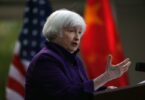Like the two previous governments the present one is also fond of borrowing spree to clear the liabilities of non-productive and extravagant expenditures.
This dissolves the claims of austerity and not borrowing from the central bank during the first half of current fiscal year into thin air. Public debt has gone up by 40 percent during the past 15 months and touched the unprecedented level of Rs.41.8 trillion by the end of September, 30 last year.
Previous PML-N government had left public debt legacy of Rs.29.9 trillion which was not only vehemently criticised by the central leadership of the present ruling party but multilateral donor agencies as well. It indicates that there is no change for the better by implementing a policy of fiscal discipline.
Hence a whooping increase of Rs.11.6 trillion in public debt that further aggravates the problem of debt servicing which has been number one item of public expenditure over the past 12 years, devouring over 30 percent of total revenues of the federal consolidated fund.
In addition to surging domestic debt, foreign debt has also swollen from $90 billion to $107 billion, showing an increase of 30 percent during past one and half year. Foreign debt component accounts for 35 percent of the total public debt. Bulk of the foreign debt is in the shape of high interest bearing short term commercial loans which matures for repayment from 1-3 years.
The National Assembly was told on Friday about the worsening public debt indicators, which were caused by low revenue generation from domestic sources, bulging current expenditure and the highest ever rate of interest being paid on both domestic and foreign borrowings. A massive shortfall of Rs.385 billion has been witnessed in tax collection during the past 7 months. Federal Board of Revenue has once again extended the deadline to February 29 for filing of tax returns. This is the fifth extension in deadline for filing tax returns since September last year.
The traders-FBR row over the mandatory condition of presenting CNIC copies in retail trade over Rs.50, 000 has ended. The condition has come into force and the traders now support it. The coordinated efforts of tax collectors and representatives of traders will help implement the documentation of economy drive of the government to expand the tax base by registering the traders under the sales tax and income tax regimes. It remains to be seen how far it contributes to achieving the tax collection target set for the current fiscal year.
The sharp surge in the public debt has been a subject of informed and critical debate since January last year, suggesting to the PTI government that merely admitting this phenomenon is not enough and urging them to take corrective measures for gradual reduction in public debt which had reached to the unsustainable limit during the last year of tenure of previous government. The present government was cautioned that public debt will rise to 74 percent of the size of fast shrinking economy but to no avail. Now debt burden has shot up to 85 percent of the GDP. Weak economic management is one of the major factors of ballooning public debt. Other factors are external liabilities on account of balance of payment obligations and retiring foreign and domestic debt.
The issue of growing public debt and its sustainability in the current macroeconomic framework has been debated lover and over at economic forums of the country. Borrowing in itself is not a bad fiscal device. It is the mode of spending of borrowed money that creates risks to the economy. The mode of spending by Japan and Greece provides valuable guidance to economic managers and financial wizards of the government. Japan borrowed 253 percent of its GDP for investing heavily in enhancing productive capacity of the economy which helped break the trap of low economic growth. On the contrary, Greece acquired debt 180 percent of its GDP to spend it lavishly on non-productive construction activities and was then compelled to mortgage national assetts and even postal services and water supply systems with the European banks in addition to reductions in salaries and pensions of government employees.
What matters is the shrunk paying capacity of the economy for the public debt. The problem with Pakistan is low tax revenues, narrow exports base, and low foreign direct investment. These factors make it difficult to carry the load of even smaller level of national debt.






